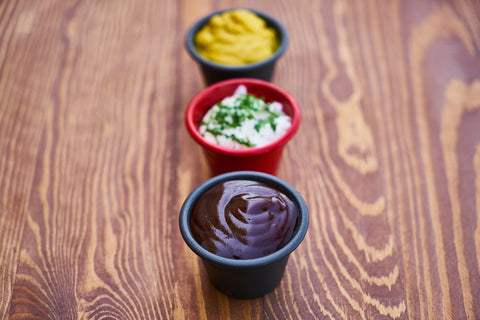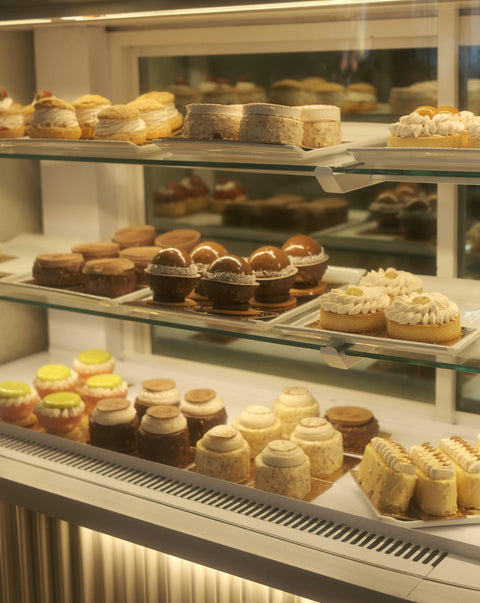A French dinner is more than just a meal; it’s a true art of living, marked by conviviality, sharing, and a great attention to detail. If you want to recreate an authentic French dining experience, it’s important to understand the various stages of such a meal, as well as the cultural customs that go along with it.
In this article, we’ll guide you through the essentials of a traditional French dinner and give you some tips on how to adapt it at home.

1. The Apéritif: A Friendly Start
A French meal often begins with an apéritif, a relaxing moment that precedes the actual dinner. The apéritif is an opportunity to enjoy a drink while nibbling on light appetisers such as olives, nuts, tapenade toasts, or mini quiches. It’s a time for conversation and to prepare for the feast ahead.
Some ideas for a French-style apéritif:
• Bubbles: a glass of champagne or crémant.
• Pastis, a favourite in the south of France.
• Light wines, such as a Provençal rosé or an Alsatian white.
• Serve with fresh cheeses, charcuterie, or small puff pastries.
2. The Starter: Light and Tasty
In France, dinner typically consists of multiple courses, starting with the starter (or hors d’œuvre). Starters are usually light, designed to whet the appetite without being too filling. This might include a salad, soup, or a dish of fresh vegetables.
Some ideas for starters:
• A warm goat’s cheese salad.
• A velvety courgette or pumpkin soup.
• Asparagus served with hollandaise sauce.
• Salmon rillettes with slices of toasted baguette.
3. The Main Course: The Heart of the Meal
The main course is usually the highlight of the dinner. It can be a meat, fish, or vegetable dish, often accompanied by a refined sauce. Each region of France has its specialities: boeuf bourguignon in Burgundy, cassoulet in the southwest, or bouillabaisse in Provence.
Some ideas for main courses:
• Coq au vin, served with potatoes or pasta.
• Sea bass fillet with a beurre blanc sauce.
• Gratin dauphinois served with a roasted meat dish.
• A ratatouille, the iconic dish of Provençal cuisine.
4. The Cheese Board: An Essential Tradition
After the main course, the cheese board is a must-have in any traditional French dinner. France is famous for its cheeses, and this part of the meal is an opportunity to discover several varieties, ranging from mild to aged. A good cheese board typically includes a balance of soft cheeses (like camembert), hard cheeses (like comté), and blue cheeses (like roquefort).
Tips for a great cheese board:
• Serve three to five different types of cheese.
• Accompany the cheeses with fresh bread and, optionally, dried fruits or jams.
• Let the cheeses reach room temperature before serving to maximise flavour.
5. The Dessert: A Sweet Finale
The dessert brings the meal to a close with a sweet touch. French pâtisserie is world-renowned for its finesse, and there is a wide variety of desserts to choose from. Depending on the season and occasion, desserts can be simple or more elaborate.
Some ideas for desserts:
• A Tarte Tatin (upside-down apple tart).
• Macarons or chocolate éclairs.
• A rich, gooey chocolate fondant for chocolate lovers.
• A lemon mousse for a refreshing note.
6. The Digestif: A Final Touch
After dessert, some dinners include a digestif, a small liqueur or spirit that aids digestion. Popular choices include cognac, armagnac, or an eau-de-vie.
The digestif is served at the very end of the meal, often alongside extended conversations at the table.

7. French Table Etiquette
Beyond the dishes themselves, a French dinner follows certain rules of etiquette. Here are a few essential points to keep in mind for an authentic experience:
• Wait for all guests to be served before starting to eat.
• Avoid resting your elbows on the table.
• Hold your cutlery delicately and rest your fork and knife between bites.
• Engage in conversation, which is often as important as the meal itself.
A French dinner is an experience that goes far beyond the food itself. It’s a moment of sharing and conviviality, where each dish is carefully chosen and served in a specific order to create a harmonious meal. If you want to recreate a traditional French dinner at home, follow these simple steps, and remember that the key is to take the time to enjoy every moment.



